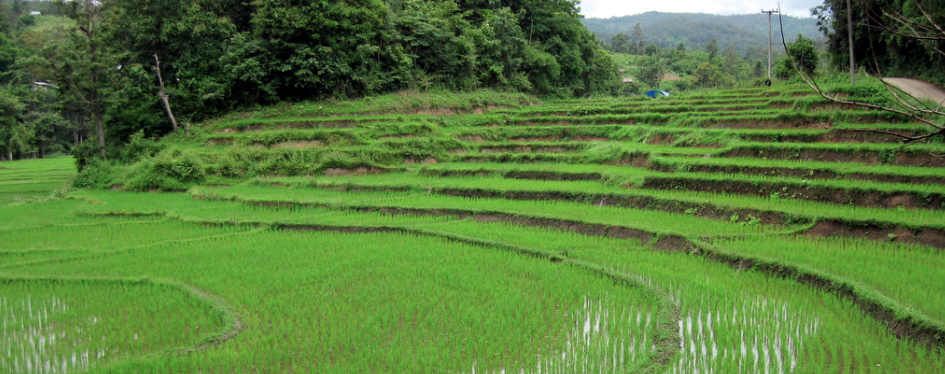By Fatimah Zainal
The air on the hill-country smells of wood-flesh and dried leaves. The afternoon floats on the lethargic tenor so accustomed to tropical orients such as Thailand. The wind cups the distant sound of English and Thai words being spoken, bringing them to the ears of tourists not unlike myself.
The hill-country located in Chiang Mai cossets a concentration of hill tribes that trickled into Thailand from the borders of Burma and Laos. The Karen (Karieng) and the Hmong (Meo) are among the two main hill tribes residing in the Golden Triangle of Chiang Mai.
The entrance fee to the villages is 500 Baht per person. According to our tour guide, the lump sum is funneled into sponsoring the peoples healthcare, school and medicinal supplies, as well as basic infrastructures such as their schoolrooms and houses.
However, there has been much hearsay that the villages are actually artificial. The tribes, according to hearsay, are being exploited for their atavistic lifestyles and most of the money is actually siphoned into the private account of an unknown onlooker.
The Karen tribe arrived from across the Salween River in Burma. Popularly known as the longneck tribe, the Karen (Padaung) women wear permanent brass rings around their necks. This ritual starts from the early formative years of their girlhood and are added in weight as the girls age. The rings gradually push down the collarbone to give them unnaturally long necks. The rings are also typically worn on the legs and arms, for the purpose of maintaining slim limbs.
For the Padaung women, their long necks and slim limbs are more than just a cultural responsibility. For them, it is the very portrait of pulchritude.

Their tribal counterpart, the Hmong tribe, also have their distinct rituals. The Hmongs crossed into Thailand from Laos. However, there are no proper documentation regarding their backgrounds, making their history almost impossible to trace. Their most defining characteristic is their distinct costumes which are very colourful and intricately designed. The Hmong women at the village don colourful headdresses.
Up on the hill country, the houses were made of teakwood and so are the huts where the women set up shop and work at their yarns. Afterwards, the fruits of their labour are displayed on the racks and tables outside their huts for tourists to purchase.
Scarves with tribal motifs, animal prints, and intricate designs are hung on display. On the tables were jade elephants, rings, necklaces, and bracelets of ivory. Some shops offer a variety of mock Karen brass necklaces”these unclasp at the back unlike the real ones, commemorative photos, quilted blankets, and traditional costumes.

There is a small classroom where the children go to school three times a week. They learn English, mathematics, and their native languages.
We approached one of the huts. Sitting on the lip of the makeshift bed was a Padaung girl. The child was about 8 years old, and she was engrossed with something. Upon closer look, I noticed a smartphone in her delicate palm. Her finger was sliding across the touchscreen like it was second nature. Her eyes were like those of a doe caught in the headlight when she looked up and saw us standing at the foot of her hut. She quickly hid the phone in her hand behind her back.
These incidents made me question what reality it reflects. Are these people more advanced than they seem? Is the smartphone store-purchased, a gift, or something left behind by a visiting tourist? Has the hill-tribes boulder gotten a serious shove up the evolutionary hill? Or are the villages artificial, erected for the purpose of gaining profit? And where does the 500 Baht entry fee per person get funneled to?
As we were leaving, we walked past the stretch of huts and shops owned by the Hmong women. Clad in the traditional Meo costume and wrists adorned with bracelets made of wampum beads, an elderly Meo woman chuckled and called out cheerfully to the tourists passing by, œCome back okay! Her calico shoulders shook with laughter, her lips pulled back to display teeth blackened in by betel.
The tourists smiled, amused by her easygoing humor.
Artificial or not, any tourist with a pair of curious eyes would agree that a glance in any direction of the villages show the sight of one of the most remarkable marvels in the treasure trove of Chiang Mai. The beauty of the peoples should be seen by everyone visiting this pearl of the South East Asia: Thailand.
